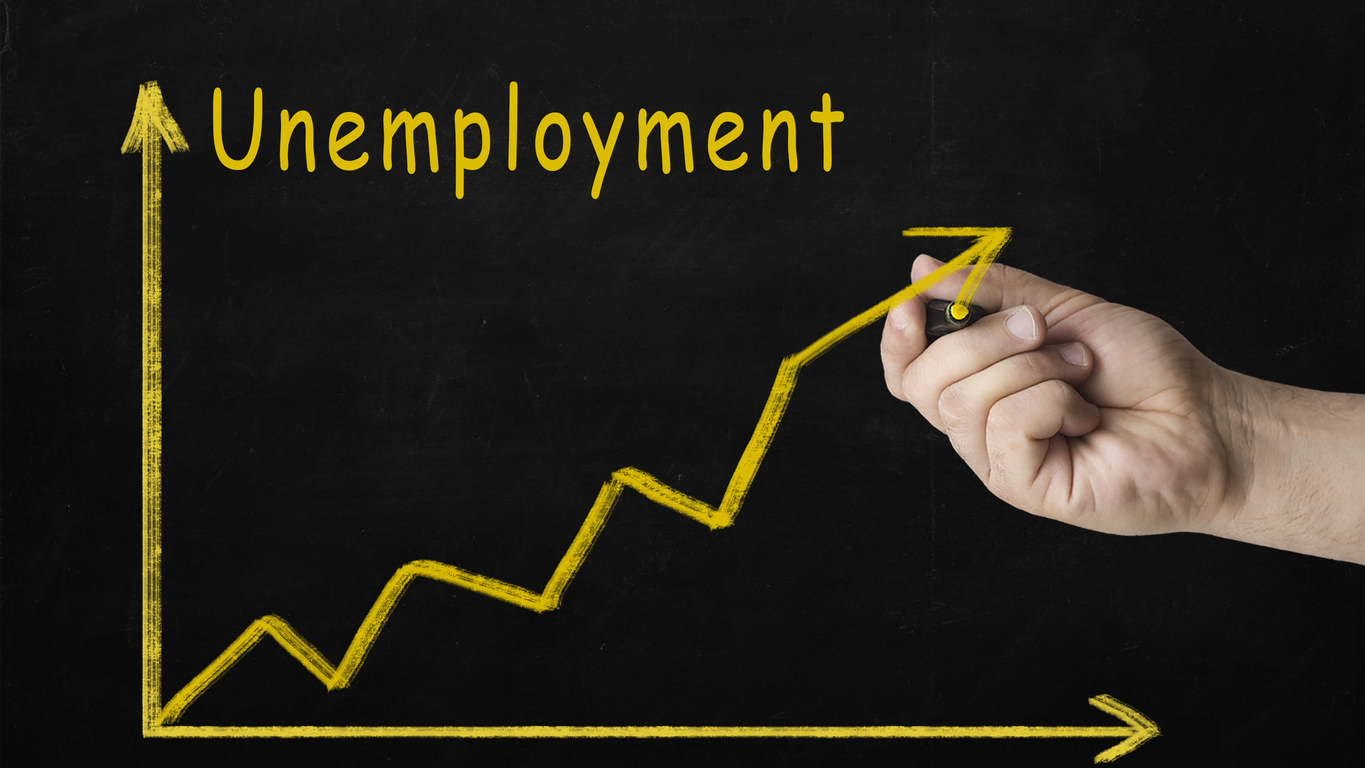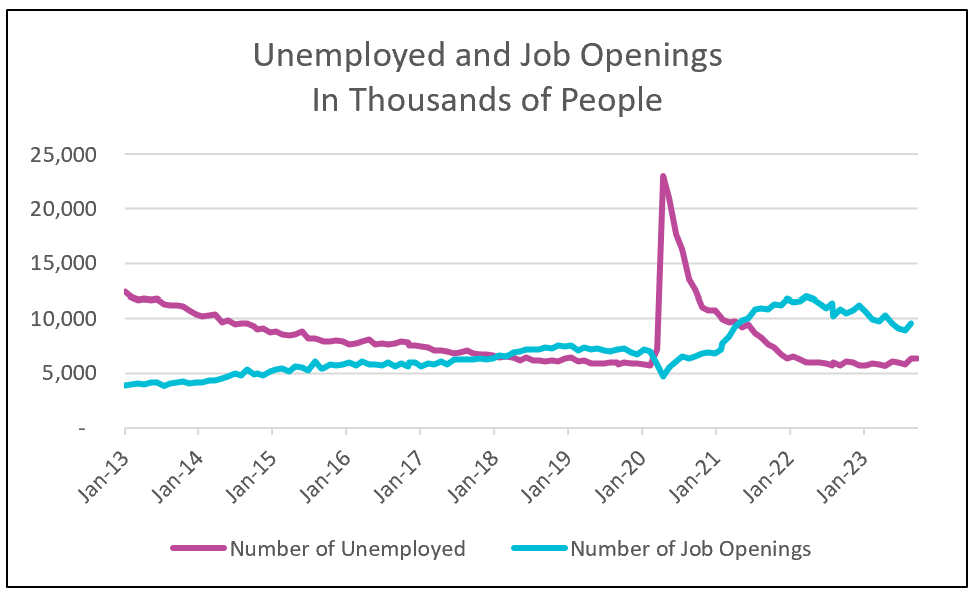
A surprising increase in hiring underscores the job market’s resilience and supports policymakers who favor increasing interest rates. However, many trends, including slower wage growth, suggest the economy and inflation are subsiding and warrant not increasing rates.
 GRAPH HERE
GRAPH HERE
The highlights from the Bureau of Labor Statistics’ report, The Employment Situation – September 2023 are listed below.
Employers continue to hire despite predictions that higher interest rates will dampen sales and slow economic growth. Hiring has surged during the last three months. September’s payrolls increased the most since January, and July and August’s figures were revised higher by a total of 119,000 workers. Payroll gains had been trending lower, but September marked the first time the six-month moving average of payroll gains increased since October 2022.
September’s hirings were broad-based, with the leisure and hospitality industry gaining the most (96,000 jobs). The opening of a new school year helped increase employment in the government sector by 73,000 workers. Employment in the category “Information,” which includes the motion picture industry, has fallen by 59,000 workers since the Hollywood writers’ strike began in May. The United Auto Workers strike had little or no bearing on September’s figures because the employment survey used by the Bureau of Labor Statistics was taken as of September 10th, and the walkout began September 15th. The strike will likely impact October’s payroll figures.
The participation rate was unchanged but fell among women in their prime working age (25 to 54). Many analysts believe this is the beginning of a trend because the childcare stabilization grant program, aimed at keeping childcare providers open during the pandemic, ended on September 30th. The program intended to keep childcare providers open during the pandemic. It helped approximately 220,000 childcare programs. The Century Foundation estimates that 3.2 million children will lose spots at daycares that close, forcing many working mothers to leave the labor force.
The unemployment rate was unchanged at 3.8% because employers hired almost everyone who entered the workforce. The labor department reported that job openings increased for only the second time in 2023. Earlier in the year, the demand for labor had fallen while more people entered the workforce and fewer workers quit their jobs. These trends helped ease the labor shortage that persisted immediately following the pandemic when there were two openings for every unemployed worker. However, a shortage of workers remains, with 1.5 job openings per unemployed worker. (JOLTS)

Wage increases were moderate in September, climbing at the slowest pace since March 2021. Over the past year, the downward trend in wages has been less than the fall in the consumer price index. The growth in real wages supported the rise in consumer spending. Falling gas prices also provided additional income for purchases in 2022. Gasoline prices fell 33% between June 2022 and the end of 2022 but have since rebounded 17.5%.
The large jump in hiring supports those policymakers who believe another rate hike is necessary when the Federal Open Market Committee (FOMC) meets on October 31st. The FOMC has lifted its benchmark rate eleven times since March 2022 to slow the economy and lower inflation. Its target rate is between 5.25% and 5.5%, the highest in 22 years. But the labor market has shown surprising resilience, and its strength has bolstered consumer spending and economic growth. Continuing strength in the labor market adds inflationary pressures, but increasing rates too much could trigger a recession.
A rate change can take years to filter throughout the economy. The recent sharp increase in the 10-year treasury bond yield implies that investors believe interest rates will remain elevated longer than initially expected. Mortgage rates are tied to the 10-year treasury. The thirty-year fixed rate mortgage now exceeds 7.25%, a 23-year high, and has sharply reduced purchases of new and existing homes. The National Association of Realtors reported sales of existing homes fell 0.7% in August and over 15% lower than a year ago. New home sales fell at an annual rate of 8.7%, according to a Census Bureau’s recent release.
Policymakers must also weigh the impact of the resumption of student loan payments, the strikes, and a possible government shutdown if the government does not reach an agreement by November 17th. Each of these occurrences would contribute to slowing the economy.
The FOMC will benefit from knowing both the CPI and PCE price indexes before deciding whether to raise rates at their next meeting. Read Higher Rock’s summary and analysis of September’s CPI report shortly after the Bureau of Labor Statistics releases it on October 12th.